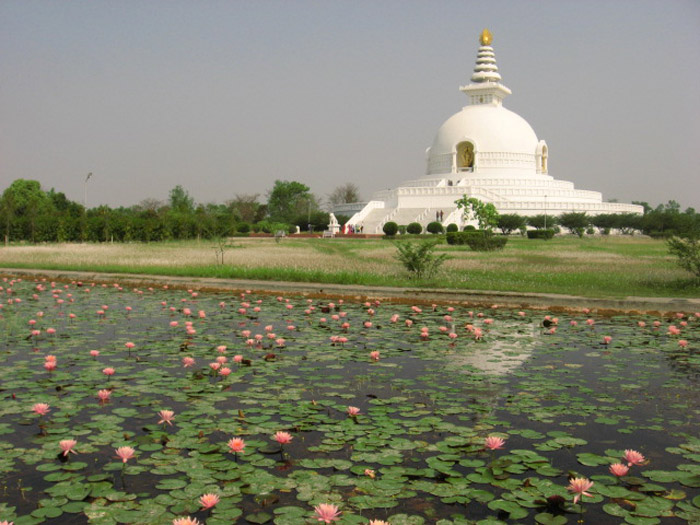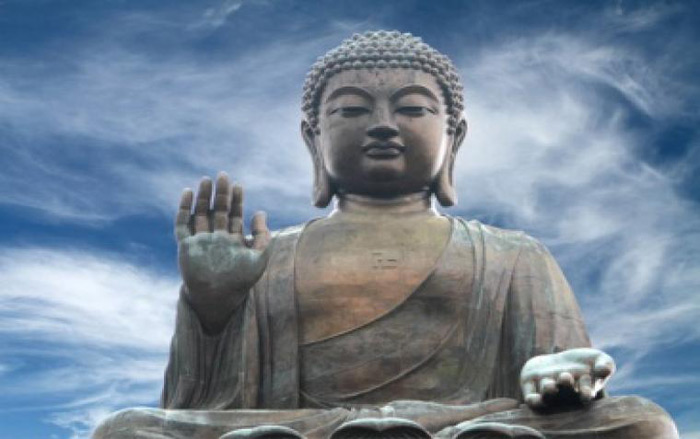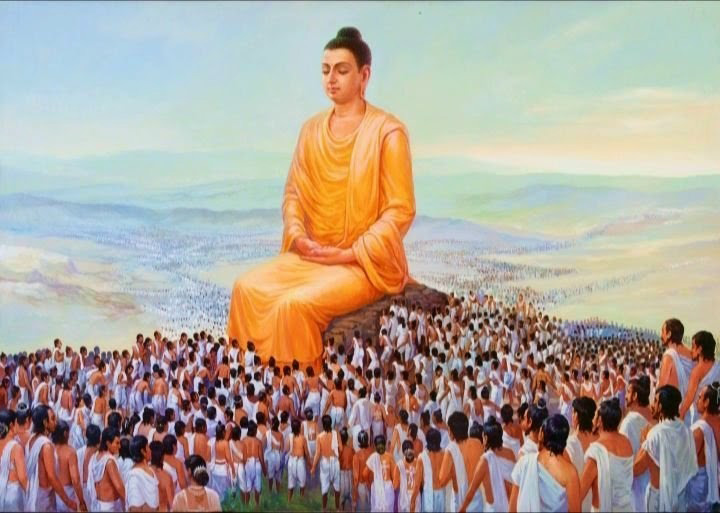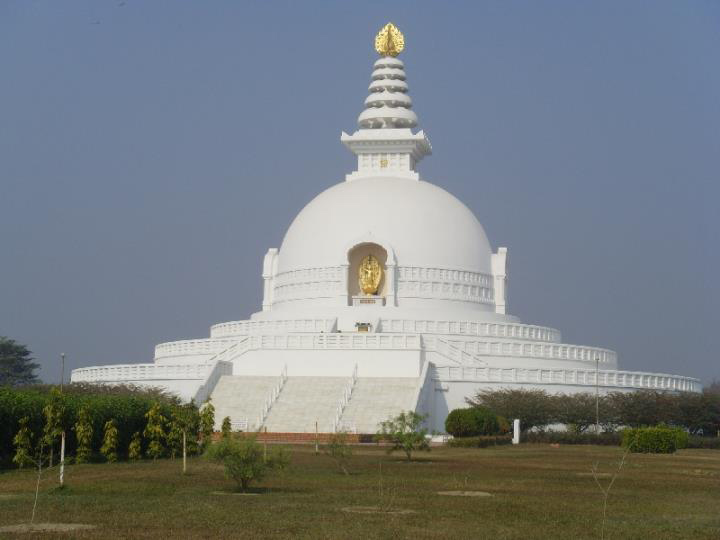Lumbini, the birthplace of Shakyamuni Buddha
The United Nations Science, Education and Cultural Organization (Unesco) has recognized Lumbini, the birthplace of Shakyamuni Buddha, as a World Cultural Heritage in 1997.

Lumbini is a famous land, one of the sacred pilgrimage sites of Buddhism . Lumbini in Rupandehi district is about 36 km from Sonauli border of India. The land is said to be the place where Queen Mayadevi gave birth to Siddhartha Gautam , who later became Sakyamuni and gave birth to Buddhism. Thich ca lived during the period from 563 to 483 BC.

Lumbini is one of the four famous pilgrimage locations in the world, also an important place associated with the life of Buddha. The other three locations are Kushinagar (where Buddha entered Nirvana); Bodh is also known as the Bodhgaya (where Buddha meditated 49 days under the Bodhi tree and enlightened to the teachings of Buddhism); the last place is Sarnath (the first place where the Buddha preached).
 Buddha Shakyamuni preached the Dharma to Buddhists
Buddha Shakyamuni preached the Dharma to Buddhists
Lumbini is located at the foot of the Himalayas, about 25 km east of the Ca Ty La Ve citadel. This citadel is where the Buddha lived until he was 29 years old. Lumbini has several temples and temples including the Queen Mada temple. There is also Lake Puskarini and Lake Holy , where Queen Mada celebrated a dip before the Buddha was born. Legend has it that when the Buddha was born, he stood firm on his legs, his face facing the north went seven steps, each step of the Buddha was supported by a lotus building below. He looked all over the four directions, one hand pointing to the sky, one pointing to the ground and saying: " I am the most noble person in the world! This is the last time of my life, will no longer be reborn in life. hey again . "

In addition, Lumbini retains a part of the old Ca Tỳ La Vệ palace . At the time of the Buddha's life, Lumbini was a beautiful garden full of green between Ca Bhikkhu and Devadaha. Queen Mada gave birth to the Buddha here while on her way back to her parents' home to give birth to her first child according to the traditional Indian tradition of that period.

In 249 BC, King Asonh Vuong (Ashoka) visited Lumbini, at which time the place was still a village. King Ashoka built four towers and a pillar of stone. The stone pillar is engraved with a long line of words: " I am the Ashoka King, the faith of the gods, for 20 years I have reigned, I have made a royal visit to the Buddha. was born . I decided to reduce the amount of money for Lumbini by an eighth. "

Lumbini was later forgotten for centuries, until 1895, a famous German archaeologist Feuher discovered large pillars here on an expedition. Soon after he excavated the area around the pillars and found the sandstone foundation of an ancient temple and sandstone slabs carved with Buddha images.

In the process of studying and researching, scientists have hypothesized that the temple of Queen Mada has been built on the basis of a much larger temple that has existed since ancient times. To the south of this temple is a famous sacred lake, Puskami . It is believed that the wild queen Mada bathed in this lake before giving birth to the Buddha. In 1996, archaeologists found the stone that King Ashoka used to mark Buddha's birthplace more than 2,600 years ago.

Centuries later, Lumbini became more and more popular and a desire and destination for Buddhists from all over the world to choose to pilgrimage. In the year 337 - 664, the two monks named Dharma (337-422) and Xuanzang (602-664) recorded information about Lumbini in their works, so that the land was spread widely. all over. After nearly a century until 1896 the Nepalese archaeologist discovered the pillar of stone that ancient King Ashoka had carved the word on.

Until 1997, after being recognized by Unesco, Lumbini was more concerned with conservation, restoration and renovation. At present, Lumbini is only allowed to build temples, pagodas, monasteries, not build restaurants and hotels. The government divided Lumbini into two main zones, the West and the East. To the west is the monastery of Northern Buddhism, to the east is the Theravada Buddhist monastery and there are many strict conservation plans throughout this land.
- New discovery about the birthplace of Buddha
- Discover the remains of the Buddha in China
- The remains of Shakyamuni Buddha in thousands of years in China?
- The tree of the Buddha's Nest still lives after 2,500 years
- Top 10 world famous Buddha statues
- The origin, meaning of Buddha's Birthday and rituals should be done on the sacred day
- Unique architecture of the world's largest stone Buddha statue
- Discovered an ancient Buddha image of 2000 years of rare and rare blush
- The golden Buddha statue of 5.5 tons hides a hundred years under plaster casing
- China: Buddha's head is revealed from a 1,000-year-old tree trunk
- Miracle behind the world's largest stone Buddha statue
- Successful pairing of Buddha's hand scene
 Suzhou classic bonsai garden - China
Suzhou classic bonsai garden - China Chau Nguyen Dynasty
Chau Nguyen Dynasty Thai Son Mountain - World Wonder
Thai Son Mountain - World Wonder Ancient villages of Shirakawa-go and Gokayama
Ancient villages of Shirakawa-go and Gokayama